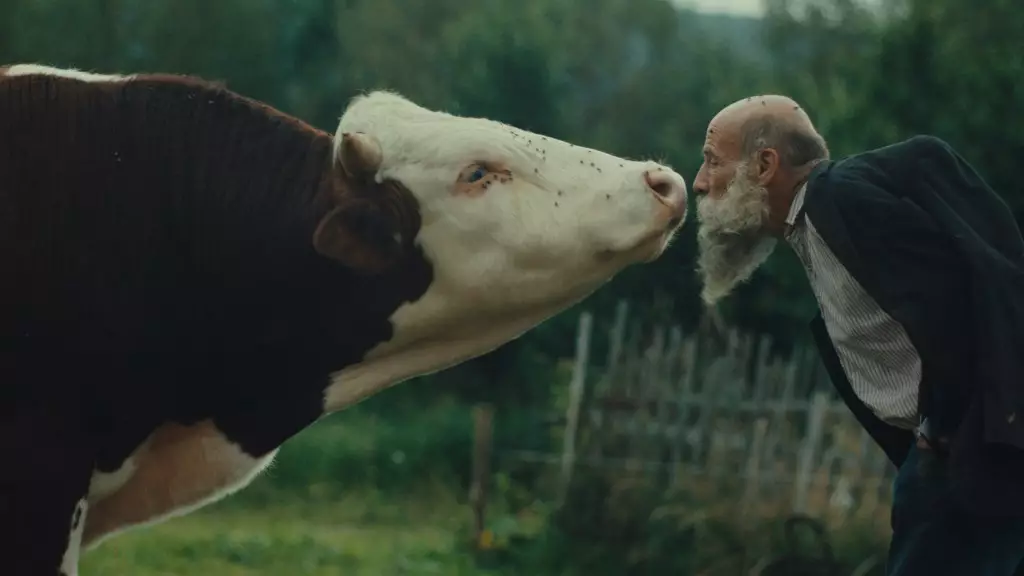In an era saturated with documentary films claiming to unveil the “truth” of human existence, the illusion of authenticity remains a powerful, yet often deceptive, tool. Films like Miro Remo’s *Better Go Mad In The Wild* attempt to craft a narrative of genuine life outside societal norms, promising viewers a glimpse into the raw, unfiltered human condition. However, beneath this veneer of honesty lies a troubling tendency to romanticize eccentricity while obscuring the very complexities that define these lives. This approach fosters a superficial understanding that aligns more with voyeurism than with meaningful social critique. True authenticity demands a critical engagement that recognizes the constructed nature of such portrayals. When filmmakers choose to highlight bizarre characters or rural eccentricities, they risk reducing complex human experiences to mere spectacles, reinforcing stereotypes rather than dismantling them. Authenticity, in this context, should challenge viewers to interrogate their own assumptions instead of offering a sanitized, entertainment-friendly version of reality.
The Power Dynamics Embedded in ‘Authentic’ Hybrids
An often-overlooked consequence of these so-called “truthful” documentaries is the subtle reinforcement of existing power structures. Films portraying marginalized or rural communities as “authentic” often position these subjects as objects of curiosity. The viewer’s gaze is fixated on their eccentricities, which are stylized and amplified, thereby converting genuine lived experiences into consumable commodities. This commodification risks turning individuals into archetypes for philosophical or political commentary, stripping them of agency and reducing their stories to narratives that serve the filmmaker’s perspective. In *Better Go Mad In The Wild*, the brothers’ eccentricities are indulged, but seldom critically examined beyond surface entertainment. Instead of fostering genuine empathy or understanding, this approach risks perpetuating a kind of cultural voyeurism that benefits audiences more than the subjects themselves. Such films, intentionally or not, uphold a voyeuristic dynamic, where power is subtly shifted to the viewer, positioning them as spectators of “authentic” lives they can observe but rarely participate in or truly understand.
Questioning the Ethical Boundaries of Presumed Authenticity
Ethics in documentary filmmaking hinge on respecting the dignity and agency of the subjects — a principle often sacrificed in pursuit of spectacular storytelling. When filmmakers emphasize eccentricity or rural hardship without providing adequate context or consent, they tread a fine line between storytelling and exploitation. The depiction of the Klišík brothers, for example, presents their lives as a form of poetic rebellion against society’s norms, yet it neglects to explore the systemic issues or personal vulnerabilities they may harbor. This can result in a narrative that feels voyeuristic, where viewers are invited to gawk at “living artifacts.” Such portrayals contribute to a distorted perception that these individuals are mere embodiments of tradition or eccentricity, ignoring the complex socio-economic realities that shaped their existence. Ethical documentary practice requires a delicate balance: showcasing authenticity without reducing subjects to caricatures, and providing context that respects their agency rather than exploiting their marginality for entertainment.
The Illusion of Disconnection: Authenticity or Artifice?
Behind every “raw” documentary lies the question of how much of what is presented is genuine and how much is artifice. Filmmakers select, frame, and edit footage, subtly shaping perceptions of authenticity. In *Better Go Mad In The Wild*, the filmmakers’ choices—highlighting alcohol-fueled conversations and eccentric behaviors—construct a narrative designed to evoke fascination. Yet, this curated authenticity risks creating a disconnect between the portrayed image and the realities of the subjects’ lives. The idea that these characters are snapshots of “true” life becomes shaky when considering the influence of the filmmaker’s perspective, framing devices, and narrative choices. Is the film genuinely revealing these individuals or is it, in fact, constructing a performative version of authenticity for the audience’s scrutiny? Recognizing this tension is crucial for a more honest engagement with documentary content. Genuine understanding demands suspending the illusion that the depicted realities are entirely unmediated, and instead questioning the choices that craft these representations.
The Centrist Potential of Honest Reflection
From a centrist liberal standpoint, acknowledging the constructed nature of supposedly “authentic” documentaries does not diminish their value but rather emphasizes the importance of critical engagement. These films can serve as a mirror for society, highlighting marginalized voices and misunderstood lifestyles. However, they require a nuanced approach—one that refuses to simply sensationalize eccentricity or rural hardship but seeks to understand the deeper socio-economic, cultural, and psychological contexts. Emphasizing empathy over spectacle is essential, as is demanding transparency from filmmakers about their methods and intentions. Ultimately, authentic storytelling should empower subjects by giving them agency and voice, rather than reducing their lives to curiosities or romantic ideals. When filmmakers embrace this responsibility, they can foster a more mature, insightful documentary tradition—one that respects complexity, challenges stereotypes, and engages audiences in honest reflection rather than superficial voyeurism.


Leave a Reply